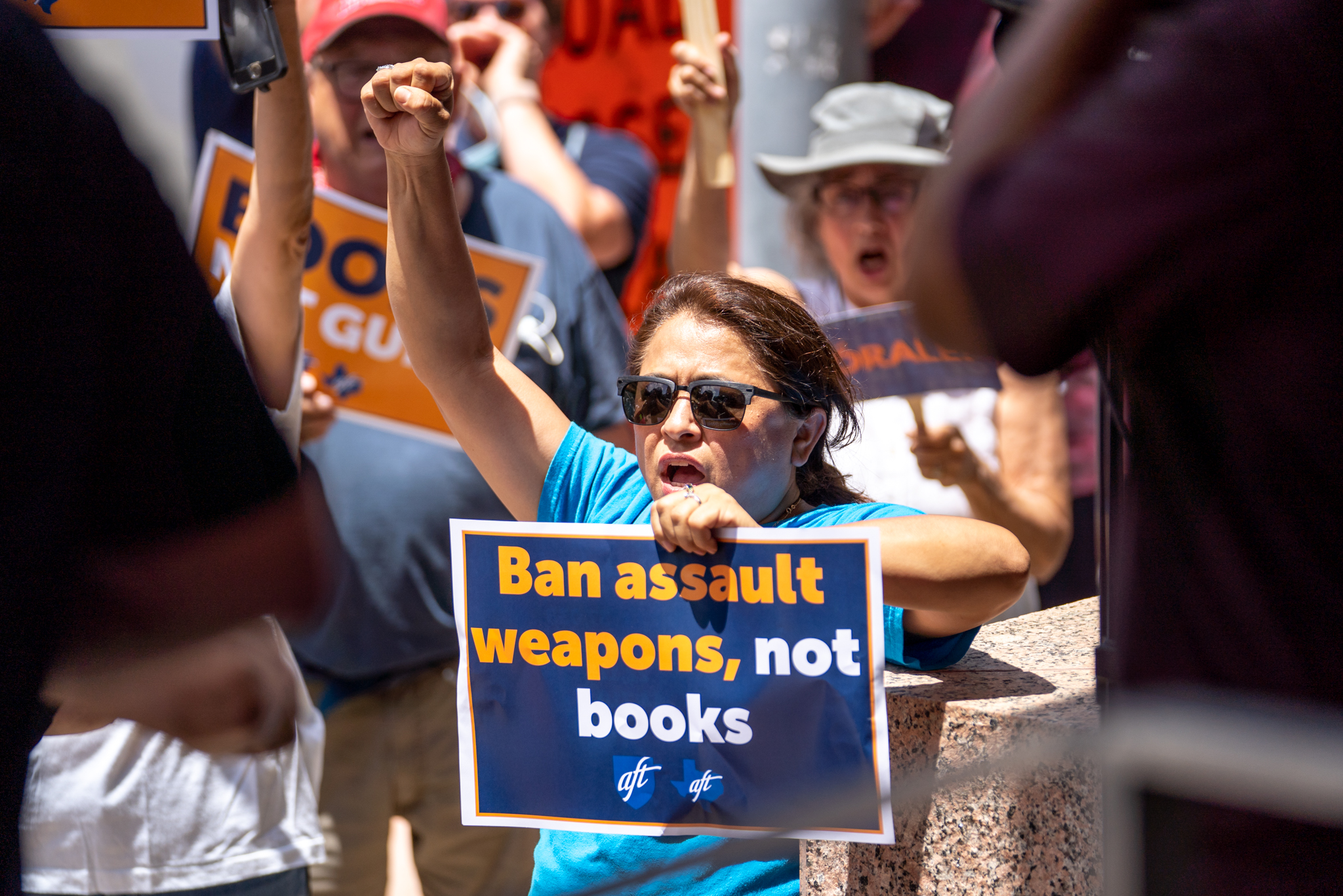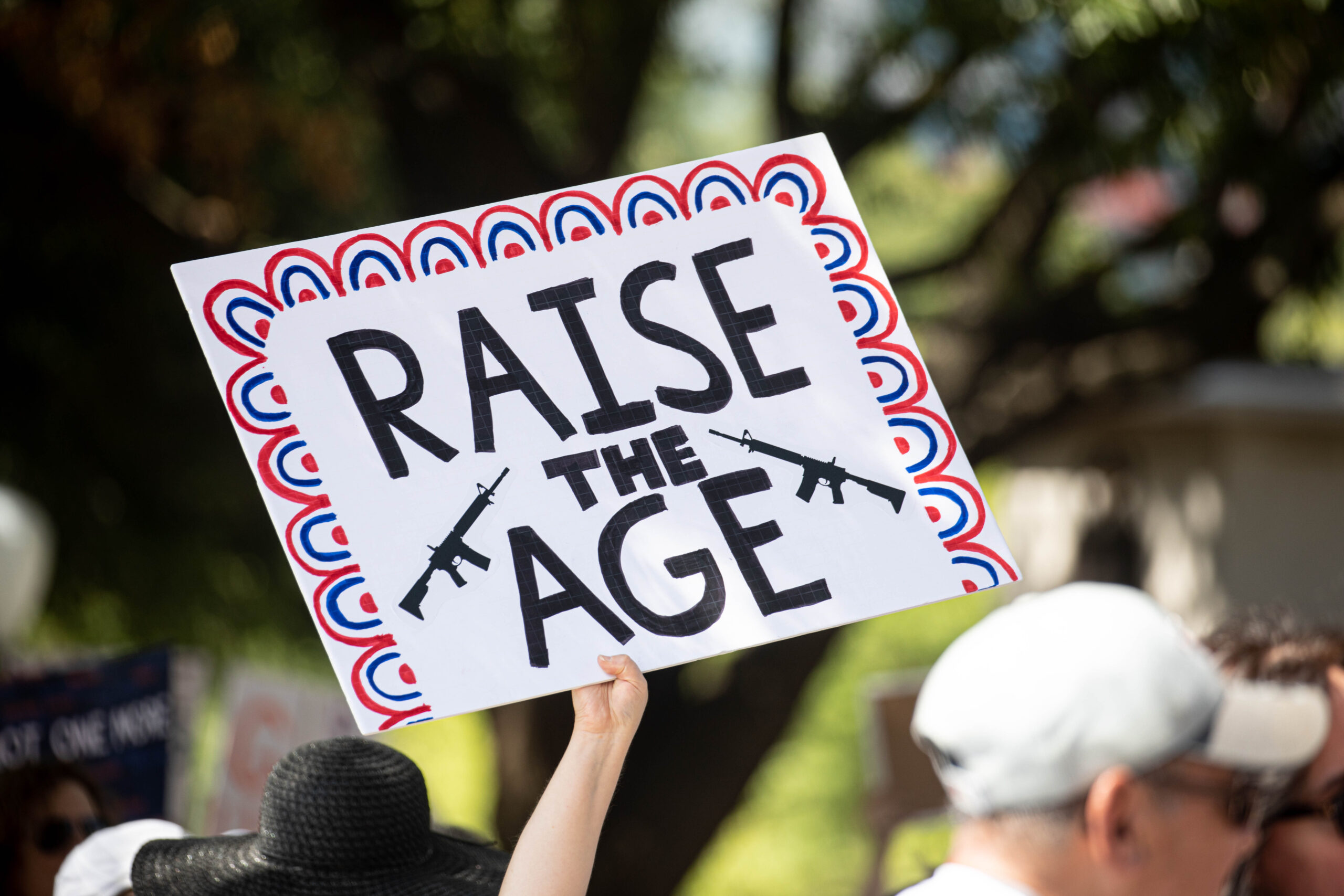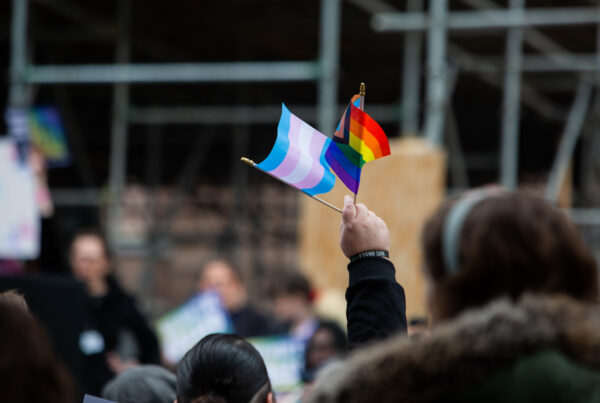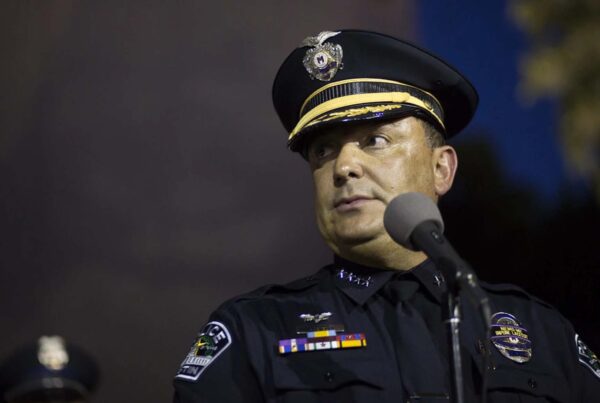Last week’s Department of Justice report on the Uvalde mass shooting once again brought the conversation about gun regulation to the forefront.
State Sen. Roland Gutierrez, who represents Uvalde, spoke at a press conference when the report was released.
“The largest refrain from the audio I’ve seen,” he said, “the 400 hours of audio and body cam footage that I’ve seen was from cops. ‘There’s an AR-15 in there. There’s an AR-15. We gotta be careful – there’s an assault rifle.'”
Gutierrez underscored how scared the officers were of this weapon:
“And the biggest and most profound of those utterances was one cop saying ‘I don’t wanna be killed today. I don’t wanna be clapped out today.’”
Victims’ families are calling for a ban on assault-style weapons – but how doable is this?
Alain Stephens is a reporter for The Trace and host of the podcast The Gun Machine. He spoke with Texas Standard on why the assault rifle ban during the Clinton administration made future bans unlikely, how a ban on assault-style weapons might affect gun deaths in this country, as well as what might come next in this debate
Listen to the interview above or read the transcript below.
This transcript has been edited lightly for clarity:
Texas Standard: These Uvalde families have called for and are continuing to call for the banning of AR-style weapons. This isn’t anything new, but what is the likelihood, do you think, of that actually happening?
Alain Stephens: So one of the things that we hear, and we constantly hear this of AR-15 bans, particularly kind of, you know, in the national zeitgeist after events like this – these mass shootings. It’s a common thing. And there’s a couple of reasons for that, right?
I think the first thing is, is that it’s something that’s been done before. It was a benchmark of the Clinton administration, and they had rolled out a ten year assault weapons ban that, for many Democrats in the pro-gun control world, was seen as a win. However, I also like to remind people on the flip side that the strengthening of what we know as the modern NRA was also fomented in those same calls because it is such a contentious issue.
The NRA was actually a somewhat scattered, maybe, type of political organization in the mid-90s. It was actually the AR-15 ban that created a very unified, solidified mission for them to kind of attack. And it’s actually then where they became kind of the powerful entity that they became today. They obviously were very successful because later on they were attributed with rolling in a Republican Congress, helping Bush get elected and, of course, getting that AR-15 ban rolled back.
So hearing these types of things, I think has a little bit of historical tradition because it’s something that we’ve seen recently. But I also think that a lot of Americans perhaps aren’t paying attention. You know, it is a political issue where the executive branch, the Biden administration, created a White House Office of Gun Violence Prevention last fall – it was again on the top of his list. Congressmembers who are very pro-gun control, it’s at the top of their list.
But while everyone’s kind of paying attention to these fears of the government, no one’s really paying attention to the judicial sphere of government, which looks absolutely different recently, especially after Trump’s election.
So if I hear you right, what you’re saying is not only has the landscape changed since the Clinton administration put an assault weapons ban in place, because the NRA really solidified and became the powerhouse that it really is now, but also just even recently with appointments on the Supreme Court that even if, like you say, the other branches were able to get something done, that it really just looks stacked against them, when it comes to the judiciary.
Yeah. I mean, so one of the things that I like to point to is actually a recent case here, you may have heard: New York State Pistol & Rifle Association v. Bruen in New York. So, for those who aren’t familiar, essentially that case struck down most of New York’s century-old firearms licensing scheme. And so essentially it called into question a lot of state gun control notions across the country.
One notable example is like requiring prospective handgun licenses to show some sort of cause for self-defense. Like that idea, they essentially threw that requirement out. But more importantly, there’s also a lot of other language in there, too.
So it halted federal enforcement measures, particularly for gun possession bans for people charged with, say, misdemeanor domestic violence or drug users. But also, it had some language in the opinion that essentially said that when states start thinking about gun control measures, that they shouldn’t or necessarily primarily look at just public safety, but they also need to consider America’s, “historical tradition” of, you know, firearm ownership.
This doesn’t seem like a super important thing, but just this language alone has caused nearly like 500 decisions across the nation in courts analyzing federal, state and local gun control measures. And so while we have this national outcry about AR-15 bans and stuff like that, we have a judicial branch that has certain cases like Miller v. Bonta.
So Miller v. Bonta is a case right now that’s going through the court systems in California that’s looking at California’s AR-15 ban. And as it currently stands, the lower federal courts in California have decided twice that its AR-15 ban is unconstitutional. And again, this is all because of this Supreme Court, kind of, doing two things.
One, showing a little bit of its hand saying, “if we get a gun case, this is how we’re going to look at it.” But also showing another thing: that it has an appetite to take gun cases in the first place. Before Trump’s Supreme Court, we kind of had a Supreme Court that it wasn’t necessarily given that a gun case is going to even get up there in the first place.
But where we go back to Trump’s appointees for Supreme Court, one of the things that we have to note is that these appointees also had some incredibly loud opinions about firearms cases ,and Trump being a huge, supportee by the NRA, exalted some of these nominees to his list. And these are the guys who were appointed.
And so we have a court system now here that while everyone’s thinking “hey, we may need to add some sort of new gun control measures,” we may have more of a country where states like California and New York are actually coming into line with, like, Texas and Montana. And so I think a lot of people aren’t paying attention to that dynamic going on right now.














